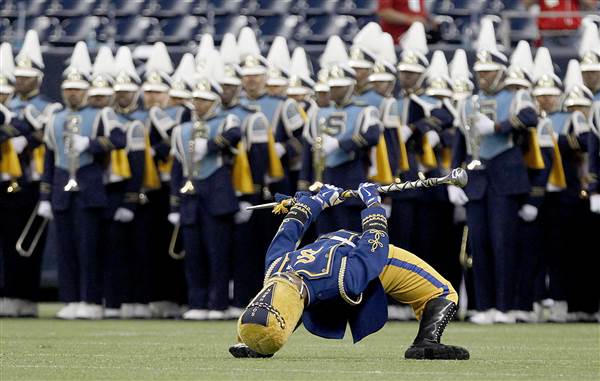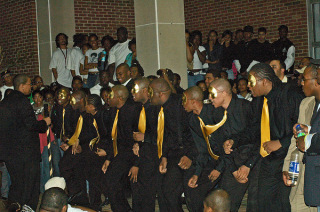
By George M. Johnson
A recent interview with Howard University President Wayne Frederick sparked conversation around alumni giving at HBCU’s and more importantly, the lack thereof.
Historically black colleges and universities have been a staple of leadership for black education since the 1800’s and continue to produce around 20 percent of all undergraduate degrees acquired by African Americans.
In a country built on the labor of Black people, HBCU’s provided an environment for black students to receive degrees when predominantly white institutions were either unwilling to accept us — or did so at a substantially lower rate than our white counterparts.
In 2013 St. Paul’s College closed it’s doors, one of at least 11 HBCUs to do so since their inception. Others like Wilberforce, South Carolina State University, and Cheyney are also on the brink of closure if financial support does not increase. Knowing this, why are alumni of HBCU’s so unwilling to give back to their alma maters?

According to US News & World Report, of the 46 HBCU’s that submitted data, only six schools—(Claflin University, 48.9 percent; Bennett College, 38.2 percent; Spelman College, 37.4 percent; Tuskegee University, 25.1 percent; Fisk University, 23.9 percent; and Livingstone College, 23.8 percent)—have annual giving coming in above 20 percent.
This statistic directly correlates with HBCU’s having smaller endowments—less to go towards infrastructure and expansion, and fewer funds to offer new students, thus putting the burden of financing on the parents. A majority of HBCU’s fall in the single digits—some as low as two percent in annual giving, in the case of Texas Southern University.
President Frederick brought up many of these concerns recently when discussing the state of HBCU’s financial stability. In his tenure, he has seen alumni giving rise from 4.5 percent to just over 10.5 percent, however he admits that it is not enough to keep buildings up to date, many of which haven’t seen renovations in over 50 years.
As an HBCU graduate twice over, and former Director of Student Accounts at Virginia Union University, I have been on both sides of this equation which allowed me to gain an understanding of the transition from a student to an alumnus, who is then asked to give back.
As a student, I faced the same struggle that many currently claim as the reason they don’t give back to the university: problems when dealing with faculty and staff, inadequate dormitories, lack of new buildings and equipment, and lastly, bad experiences with the financial offices.

I will also say that as a student, alumni giving was not something preached about until the final weeks of senior year, preventing most from actually taking a vested interest in the importance of doing so. For many alums, these negative experiences as a student continue to keep them from ever wanting to give back to the university after their departure.
To gain more insight, I spoke with Charmica Epps, Director of Alumni Affairs at Virginia Union University, around what she sees as a problem in alumni giving for HBCU’s. She states that the primary problem is having accurate contact information for alumni.
“There are too many people who are considered ‘lost alumni,’ and many still have their parents’ information on file after graduation,” Epps explained.
Another problem is the generational gap in how alumni prefer to be contacted.
According to Epps, “Seasoned donors prefer to be mailed, in comparison to recent alumni who prefer to be contacted by electronic means for faster response. Online giving has become accessible and straightforward for graduates to make donations with just a few clicks. Alumni giving at VUU has increased every year over the last six years, and we are constantly looking for ways to increase our number of alumni donors.”
Epps then took it step further in discussing the cognitive dissonance around how alumni will travel back to school for events, yet not invest in the university they call home.

“Alumni are faithfully making a pilgrimage back to campus for Homecoming but are not faithfully making an investment in their alma mater. The number of alumni donors is important, not just to boast and brag, but it’s important to funders, corporations, and foundations, who are interested in the number of alumni contributing,” said Epps.
Finally, Epps issued a stark challenge to alumni not only of VUU, but for all HBCU graduates about the importance of giving back. “As we look to keep our HBCUs financially strong, we have to invest more in student philanthropy. We must teach students before graduation, what it means to be an alum and the importance of giving back,” she said.
“Alumni giving begins as a student. When a university embraces the idea of ‘early alumni training,’ it must be done and seen as a long term investment. The connection doesn’t end when you shake the president’s hand and receive your degree. You have just transitioned from student to alum, and that is a lifelong commitment to the success of your alma mater.”
Ron Stodghill, author of “Where Everybody Looks Like Me: At the Crossroads of America’s Black Colleges and Culture,” predicts that HBCU’swill fall from 104 to 35 because of these problems.
With the intersection of dropping enrollment rates, financial crises, lower graduation rates, and a shift in school options, HBCU’s could quickly become a thing of our past.
If we are going to attend these schools, then we must remember that we as former students have a duty to help keep these doors open at the risk of extinction.
HBCU’s continue to give black students a home, in a “post-racial” society, that is slowly reverting to the days of our ancestors past. For that, we must continue to keep the doors open.


